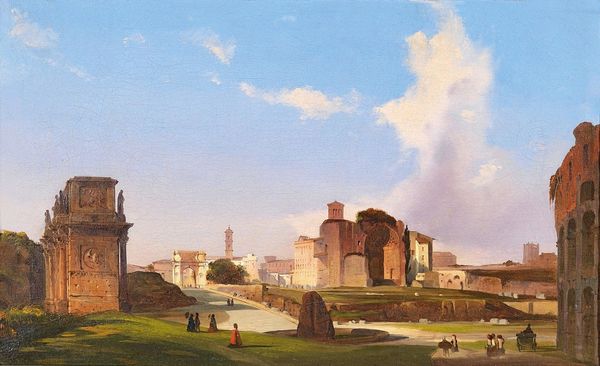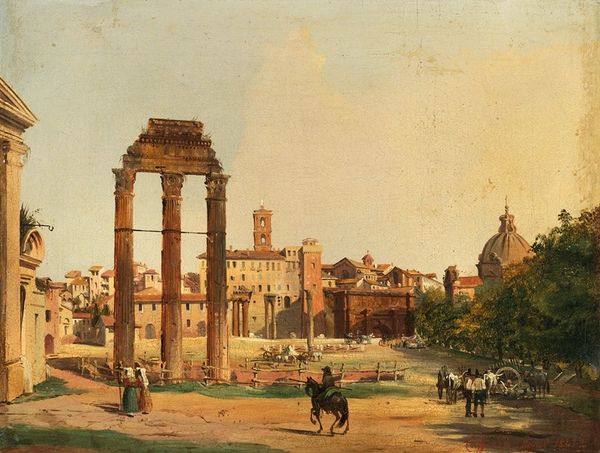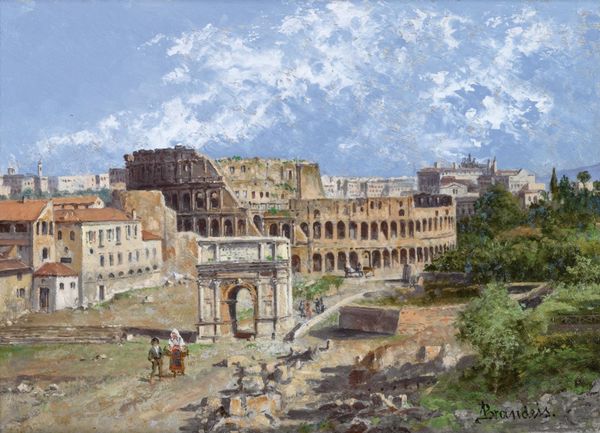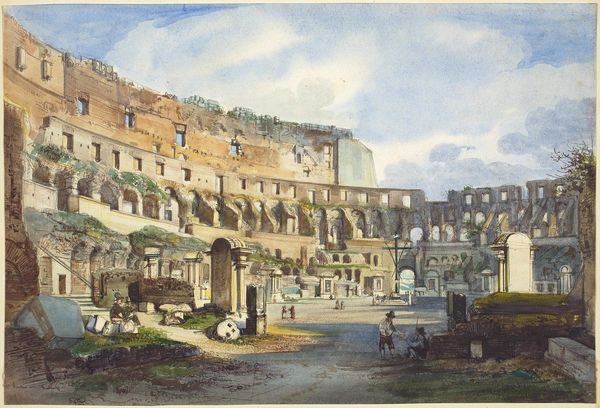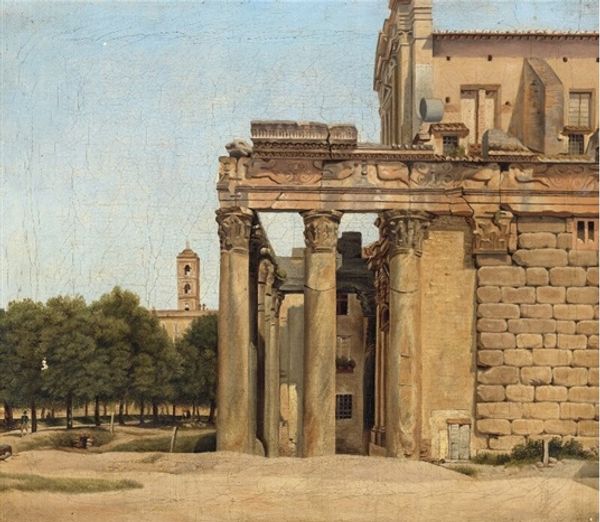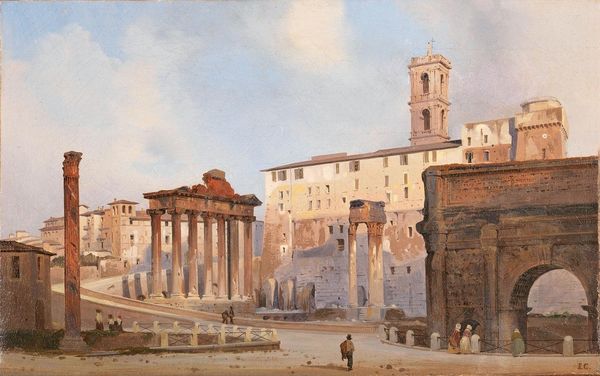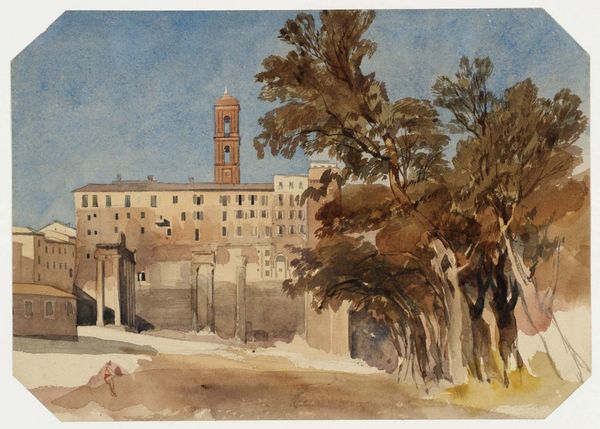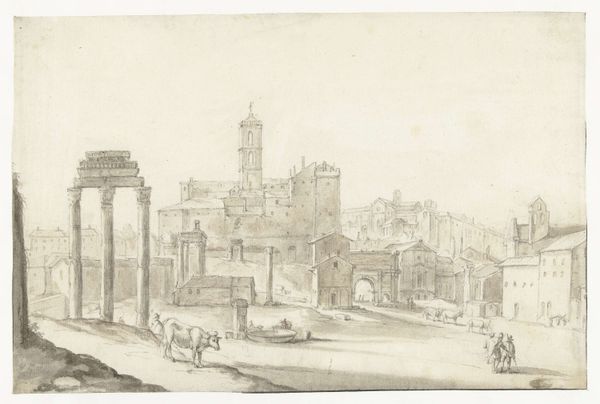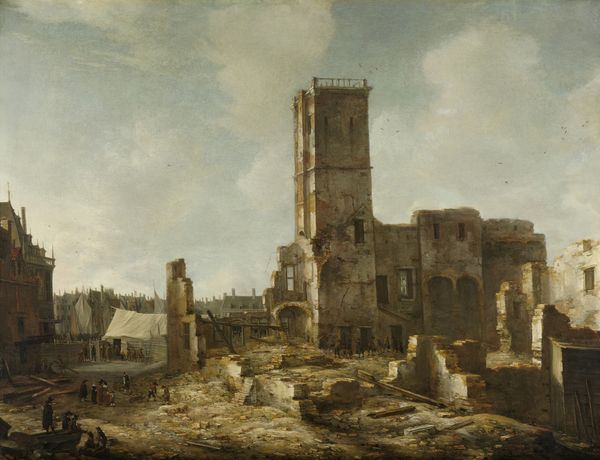
painting, watercolor
#
painting
#
landscape
#
oil painting
#
watercolor
#
coloured pencil
#
romanticism
#
cityscape
#
watercolor
#
realism
Copyright: Public Domain: Artvee
Curator: I’m struck by the layering in this cityscape; it yields a flattening effect even as it’s clearly rendering depth. Editor: That's an astute observation. The artwork is by Ippolito Caffi, depicting "The Arch of Titus and the Temple of Venus and Rome near the Roman Forum". The artist employs watercolor and coloured pencil in what seems like an oil painting underlay, a somewhat unorthodox combination for the period. Curator: Yes, the material interplay fascinates. See how the watercolor lends itself to those airy, pale blues, while hints of pencil offer crispness? The lines almost dissolve into light. Editor: Caffi was working amidst significant political and cultural shifts in Italy, especially during the Roman Republic. It's interesting to consider how representing such classical ruins could function within the discourses of national identity, longing for past grandeur but in the midst of his period, where its ruin served more as propaganda to a fallen empire. Curator: Interesting proposition. For me, the ruins, the fractured forms set against that pale sky, they whisper more about ephemerality. The Arch is static, an unmovable object yet is is surrounded and overwhelmed with ruin which shows a great transition and is on the constant edge of change, both material and temporal, where the past and future of such empire cannot hold. Editor: Well, these monuments were powerful political statements. It’s hard not to read these urban scenes as commentaries on authority. Art had social implications and such representation gave validity to the discourse and feelings towards the existing state. Curator: Perhaps. But visually, the composition insists on breaking things down. The textures contradict the presumed stability. Light fractures and distorts the buildings; a play of permanence versus the reality that the very object is degrading, almost deconstructing them through form, tone, and layering. Editor: The layers add a historical dimension too; seeing through the painting is about peeling back the layers of meaning, both socially and personally. Caffi offers more than just architectural documentation. Curator: Exactly! It is as much a philosophical inquiry as it is a record. Editor: I think our considerations regarding cultural legacy, intertwined with formal artistic strategies, provide just one interpretation. Curator: Agreed. It reveals itself through various readings!
Comments
No comments
Be the first to comment and join the conversation on the ultimate creative platform.
